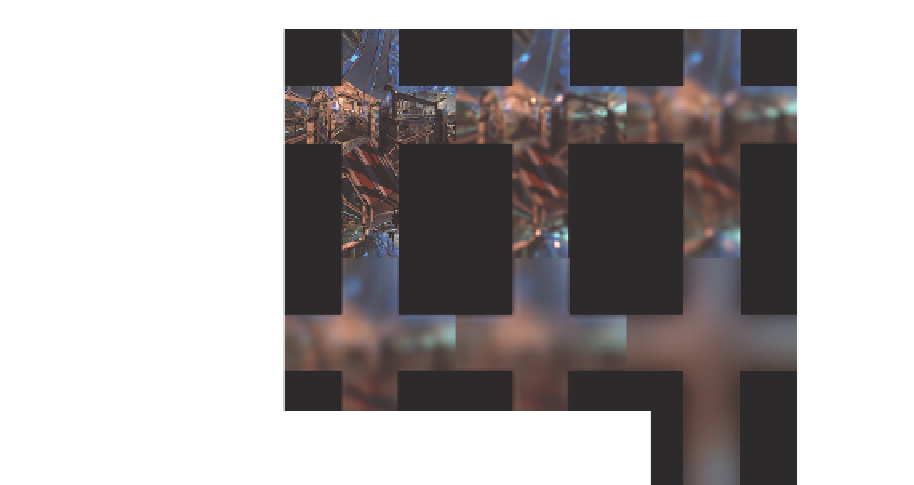Graphics Reference
In-Depth Information
Figure 1.24.
Pre-integrated integral of environmental cube-map.
All lights use the same diffuse integral approximation reasoning shown in
Section 1.3.3. Every light, depending on the light shape function, implements
equation (1.16) or equation (1.24) in the case of a textured light source, to ap-
proximate the diffuse integral. That includes sunlight, omnidirectional lights, and
spot lights with sphere, disk, or rectangular light shapes.
Standard analytical dynamic lights, depending on the light shape function,
implement equation (1.20) to approximate the specular integral. In the case of
textured area lights, we support only rectangular lights with Phong-based BRDF.
Phong-based Cook-Torrance was also used for image-based lighting convolu-
tions and texture-based area lights. Similar to already-known methods for cube
map generation [Lazarov 11], we build our kernel based on our Phong-based
BRDF and generate multiple mip-map levels of cube-maps for different specular
cone widths (see Figure 1.24). Similar reasoning, described mathematically in
Section 1.3.5, was applied to generate image-based light cards used with textured
rectangular area.
Different light shape implementation.
The
Killzone
renderer supports the following
light shapes: sphere, rectangle, and disk. All lights follow the framework set
by the disk light implementation. They require only minor changes to the code
responsible for the closest point to the shape or normalized solid angle. Therefore,
we were able to eciently share code between different light shapes.










